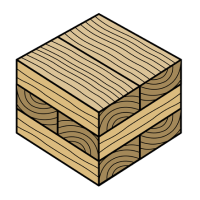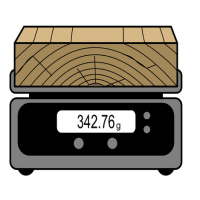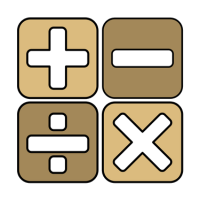Development, Background and Challenges of North American Cross-laminated Timber (CLT) Design Standard

Shaghayegh Shahhosseini | Ph.D Candidate, SUNY ESF
Last updated: Feb. 4, 2021
Introduction to CLT Development:
Mass timber engineering has been created by Technological improvements to make a renewed sense of purpose and a more versatile use of wood as a building material. Considering its environmental benefits, the importance of wood-based structures is becoming more evident compared with steel and concrete, since this building material in turn can promote further advancements toward sustainable construction solutions. [1] The construction industry has been recently under an increased movement for more sustainable solutions, regarding needs for more environmentally friendly, low carbon, thermally insulating, and less labor-intensive materials in the construction of buildings. Cross-laminated timber (CLT) is one of the most propitious materials reassuring these requirements. [2]
Cross Laminated Timber (CLT) is a prefabricated engineered wood product consisting of no less than three layers of solid-sawn lumber or structural composite lumber where the adjacent layers are cross oriented and adhered with appropriate structural glue to form a solid wood element. This large-scale load-bearing panel is suitable for both in-plane and out-of-plane loading used in structural engineering applications forming walls, floors and roofs etc. CLT is considered as a suitable and competitive construction material for residential or mixed occupancy mid- and high-rise buildings based on its mechanical properties in orthogonal directions. These advantages include large in-plane strength and stiffness, good acoustic and thermal performance, and high level of prefabrication, etc. [3]
CLT has been developed in Europe to continue the tradition of the wood construction with the most efficiency for buildings. The development goes back to 1980s when the patent was first introduced to the world from France. As the interest of using this product was increasing in the world, in North America, CLT was first introduced during the early 2000s. The following figure illustrates the historical timeline of CLT development:

Overview of CLT development from Europe to North America
CLT Standardization in North America:
For a better understanding of any construction material, building codes and standards are used as they provide homogenous regulations and specifications for the construction. Standardization of products and processes can be considered as an essential, and even the most important factor when it comes to the prefabrication. The ability to measure, understand, and manage variability is essential to effective project and process management [4]. In recent years, there has been strong interest worldwide in developing codes and standards for timber structures that are more design performance based. Although, the production of CLT has been started in the recent decades in North America, there are researchers that studied the status and challenges of the product development in the region and came up with the suggestions and further requirements for the future of the CLT market.
Since 2012, that the first version of the bi-national CLT standard has been released, it has gained academia’s attention to search the information of the document. The history of this product development in North America shows a rapid growth and interest which require faster identification and actions underlying the challenges. In this article, the status of the last version of North American CLT standard (ANSI/APA PRG 320-2019) [5] is explained with a summary of the background information maintaining the key principals of the standard and the overall challenges.
Since last two decades, CLT usage has gained momentum despite the lack of comprehensive streamlined building code adoption. It is now used either as a standalone system or in combination with other building materials in the construction of mid-rise and high-rise buildings for residential and commercial purposes. International Building Code (IBC) limits wooden buildings to four stories in the United States while local jurisdictions can approve objects on a case-by-case basis. In order to use CLT in the U.S. and Canada, the building material should be implemented into North America’s regulatory systems. Therefore, firstly a multi-level strategy has been published regarding CLT product standard, APA/ANSI PRG 320 - American National Standard for Performance-Rated Cross-laminated timber, valid for Canada and the U.S. [5]. Then a material design standard in the second stage should be released which was initiated in Canada for North America, by the Canadian Wood Council (CWC) to include CLT in the Canadian Standard Association (CSA) O86 Engineered Design of Wood Standard. In the U.S., the American Wood Council (AWC) took the same steps to include CLT into the National Design Specification for Wood Construction (NDS). Finally, these standards need to be adapted to the building codes which to some extend has been achieved after 2015 IBC’s approval on the CLT products [6].

Timeline overview of CLT specification development in North America
The most current CLT standard for North America is ANSI APA PRG 320-2019 [5] which is arranged in 9 different sections with 2 Annexes and 3 Appendixes. The CLT Handbook [7] which was first developed by FPInnovations in 2011, has served as a reference for CLT related design in North America, especially when there was no design information implemented in the codes. Since there are number of technical regulations and specifications that are applied to make a new standard, it is crucial to investigate them as the basis of most recent CLT standard. Therefore, in each detailed part of explaining this standard, the sub-standards that have been used are stated as well.
The ANSI APA PRG 320-2019 [5] standard was first published in 2012 and recognized by American National Standards Institute (ANSI). This standard is a bi-national standard between the U.S. and Canada and was developed regarding the consensus standard development process of APA-The Engineered Wood Association as a standards developer accredited by the American National Standards Institute (ANSI).
The standard specifies a total of seven CLT performance grades and the testing methods to quantify and determine the grades. ANSI APA PRG 320-2019 [5] is referenced in the 2015 edition of the National Design Specifications (NDS) for Wood Construction in the U.S., and the 2014 edition of the Canadian National Standard for Engineering Design in Wood (CSAO86) [8]. This standard, as its scope explains in its first chapter, provides dimensions and tolerances, performances requirements, test methods, quality assurance, and trademarking for CLT panels [5]. As a general requirement, the standard needs the CLT panels to be used in dry service conditions, like in the most covered structures while the equilibrium moisture content (EMC) of the wood is less than 16% in the U.S and is 15% or less and up to 19% over a year in Canada. The topics that are not included specifically in this standard are: finger joining, edge gluing, and face gluing between CLT panels and camber of CLT panels.
Confronting Challenges for CLT Standards:
The CLT challenges regarding previous studies and the governmental reports yet maintained in North America are recommended to pursue more specifications to reduce the high construction costs, and result in demands for higher value, cost savings, better quality, and longer guarantees in CLT construction. In 2018, Oregon State governmental website published a report for Council of Western State Foresters [9] that states the current and future perspective of Mass Timber’s market in North America. This report along with the literature cited have been referenced for the following table of potential challenges:

Overview of the identified challenges for North American CLT production and market
Conclusion:
While this engineered wood product is being fabricated and utilized in Europe for over three decades, the production of CLT and design of CLT structures have started in North America with some manufacturers currently being in production or in the process of product qualification. This standard is a bi-national standard for the U.S. and Canada, which has been developed based on the consensus standard development process of APA- The Engineered Wood Association as a standard developer accredited by the American National Standards Institute (ANSI). The competitiveness of CLT versus other building materials essentially has a significant interest in the marketplace and deserves the focus of future research [7]. Here, an overall research on the North American CLT standard and status of the region market have been discussed. The challenges that have been addressed here, have an opportunity of future collaboration for the potential recommendations to be eventually included in some future national references.
References
- D. Buck, X.A. Wang, O. Hagman, A. Gustafsson, Bending properties of Cross Laminated Timber (CLT) with a 45° alternating layer configuration, BioResources. 11 (2016) 4633–4644. https://doi.org/10.15376/biores.11.2.4633-4644.
- C.O. Ceallaigh, The Influence of Panel Lay-Up on the Characteristic Bending and Rolling Shear Strength of CLT, (2018) 1–15. https://doi.org/10.3390/buildings8090114.
- A.S. Albostami, Z. Wu, L.S. Cunningham, Structural behaviour of cross-laminated timber panels by the state space approach, Int. J. Comput. Methods Exp. Meas. 5 (2017) 834–846. https://doi.org/10.2495/cmem-v5-n6-834-846.
- A. Aapaoja, H. Haapasalo, The Challenges of Standardization of Products and Processes in Construction, in: Annu. Conf. Int. Gr. LEAN Constr., Oslo, Norway, 2014. https://doi.org/10.13140/2.1.3993.7600.
- American National Standard Institute, ANSI-APA/PRG 320 - Standard for Performance-Rated Cross-Laminated Timber, APA – The Engineered Wood Association, New York, NY, 2019.
- K.K. Grasser, Development of Cross Laminated Timber in the United States of America, University of Tennessee, Knoxville, 2015.
- E. Karacebeyli, B. Douglas, CLT Handbook - US Edition, FPInnovations and Binational Softwood Lumber Council, Point-Claire, Quebec, 2013.
- S. Pei, D. Rammer, M. Popovski, T. Williamson, P. Line, J.W. Van De Lindt, An Overview of CLT Research and Implementation in North America, in: World Conf. Timber Eng., Vienna, Austria, 2016.
- W.S. Foresters, Mass Timber Market Analysis Council of Western State Foresters, (2018).




